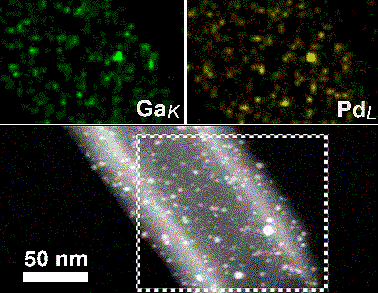Elemental mapping, the art of shooting electrons at a material then reading the return signal to map individual elements on the material’s surface, is a cornerstone of advanced nanocatalysis. Phase composition, chemical mechanisms, and the behavior of reaction intermediates can all be deduced by this advanced structural characterization technique. Trace elements can play a vital role in catalysis. Analytical electron microscopes can perform high-resolution imaging and elemental-composition maps, however, the fine-tuning of the two controllable parameters, beam intensity and dwell time, to pinpoint the elusive trace elements is a real challenge.
Dang Sheng Su and co-workers, Chinese Academy of Sciences, Shenyang, China, and Fritz Haber Institute of the Max Planck Society, Berlin, Germany, have developed a systematic method to optimize these parameters on the broadly used energy dispersive X-ray spectroscope coupled with a scanning transmission electron microscope (STEM-EDX). They present a fine balancing act between increasing electron beam intensity and decreasing dwell time to enhance the signal-to-noise ratio. This method can push STEM-EDX instruments to their analytical limit to achieve very fine elemental maps.
Such analyses of advanced nanomaterials, in particular for catalytic materials, can yield precise information on elemental composition, size, morphology, and on dynamic changes in nanoparticles as a result of catalytic reactions. This will aid developments in the creation of nanomaterials and the understanding of the events that occur at their interfaces.
- Optimum Energy-Dispersive X-Ray Spectroscopy Elemental Mapping for Advanced Catalytic Materials,
Bingsen Zhang, Wei Zhang, Lidong Shao, Dang Sheng Su,
ChemCatChem 2013, 5, 2586–2590.
DOI: 10.1002/cctc.201200654
For more new developments in advanced electron spectroscopy:




